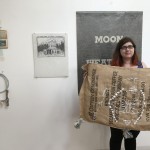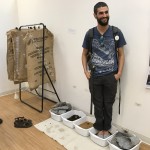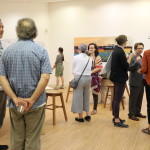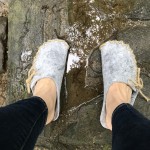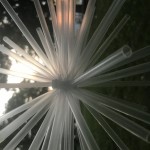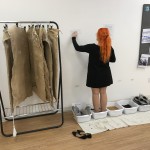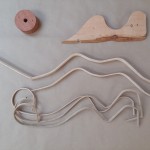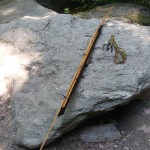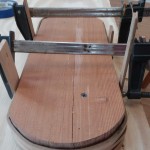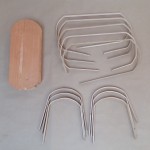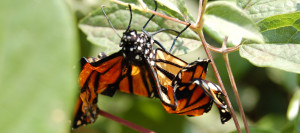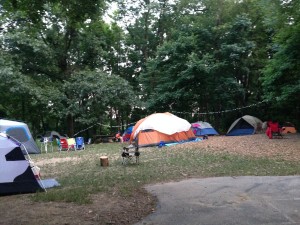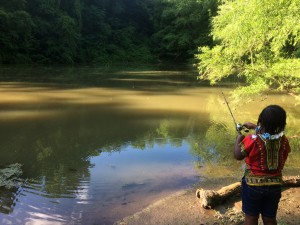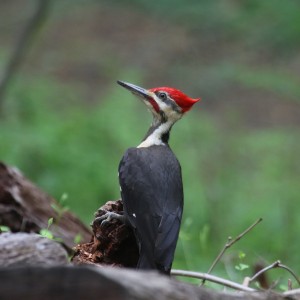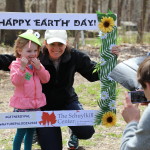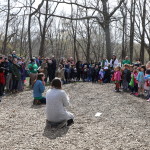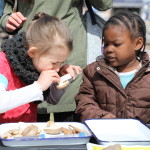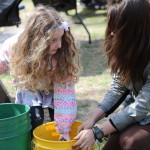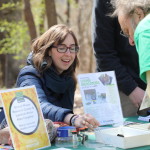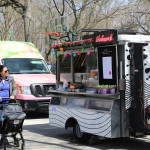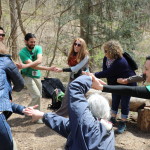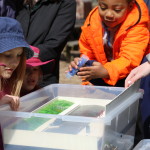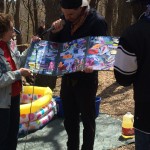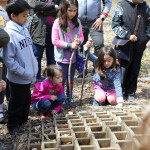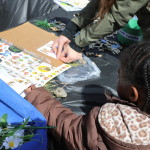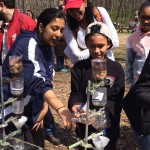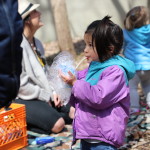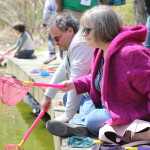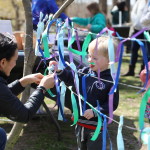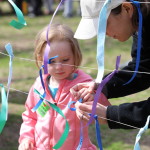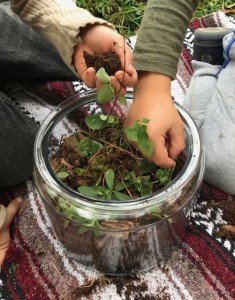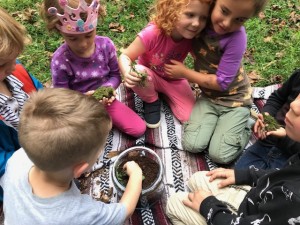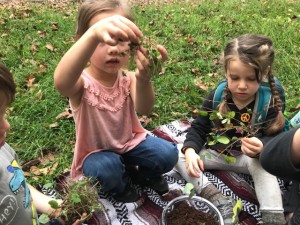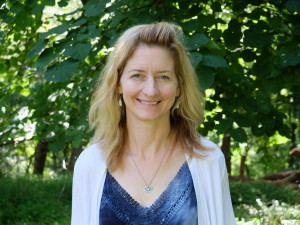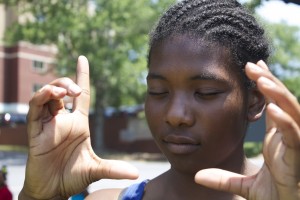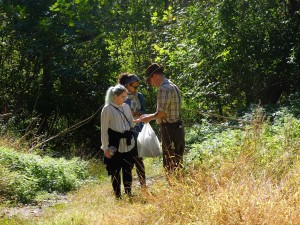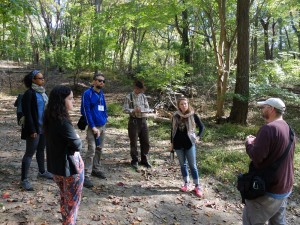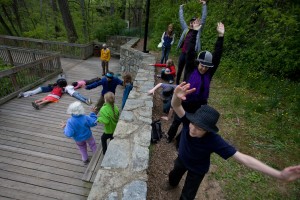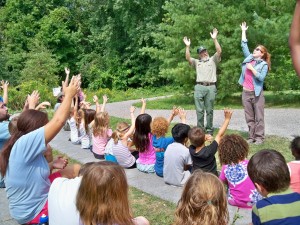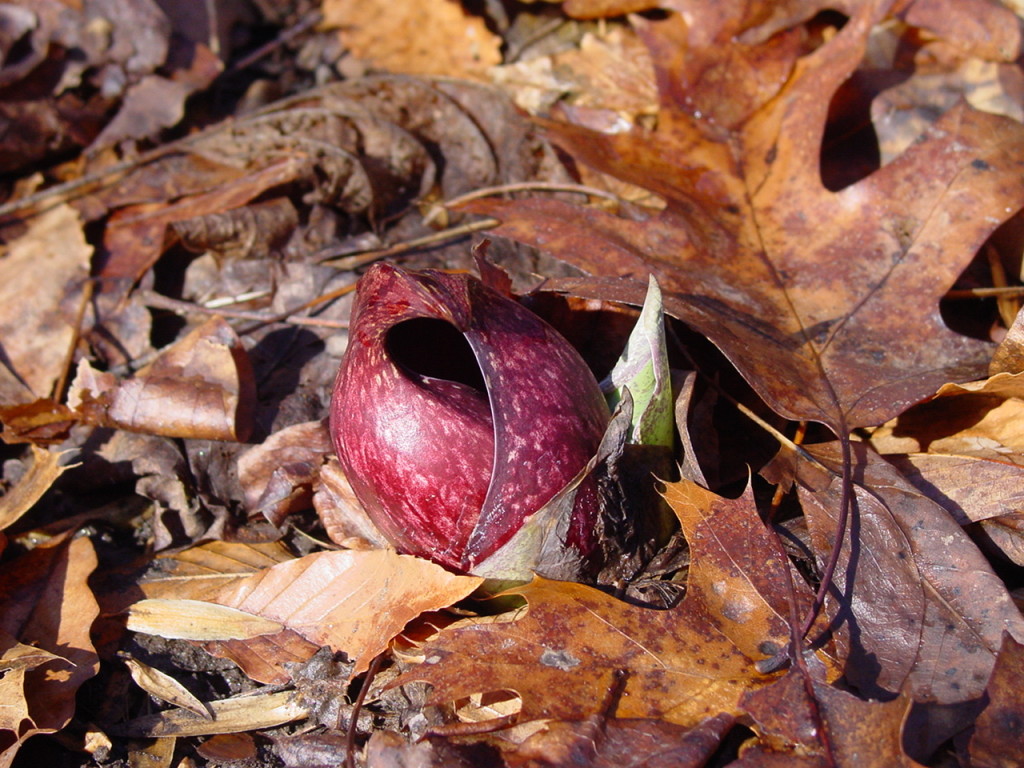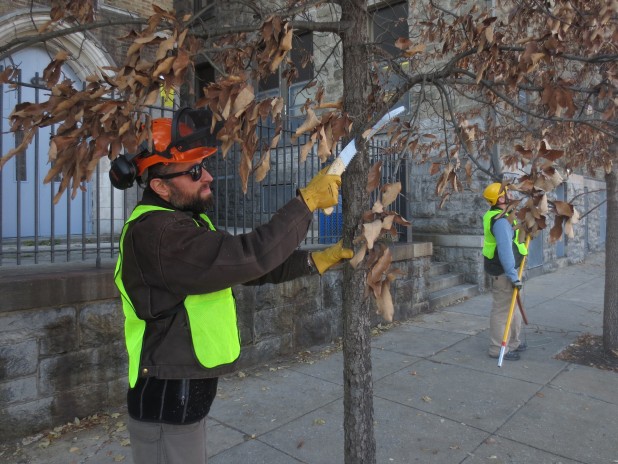By Kate Farquhar
As a participant in this summer’s Wet Lab exhibit, I received access to the space and tools I needed to start creating a trio of sculptures as part of my LandLab residency this year. Coming into the Schuylkill Center’s gallery space gave me my first chance to connect directly with an audience and gather my materials in one place. As a gesture of inclusion, I wanted to offer something enticing for people to test out alongside me as I worked. Capillary slippers—made from a technical fabric used in green infrastructure—conduct water across their surface using the physics of passive, capillary action. Working by day as a designer, I have found myself longing to exhibit, test and share capillary fabric with a wider audience, since it’s usually hidden from view in stormwater management features. This ingenious material mimics how the cambium layer in a tree allows it to passively “drink” water up to the canopy from the soil. On the night of their debut at the Schuylkill Center’s Enchanted Forest Fundraiser, slipper-wearers standing in different kinds of damp material were able to experience the same rate of water movement (creeping sogginess) that trees do when they draw water up their trunks.
Capillary fabric is also a core component of the aforementioned sculptural trio I’m presently working on, called Synestates. As a group, these sculptures pursue questions about materials and the environment: Can conventional building materials extend habitat? Can green infrastructure become a meeting place for humans and other organisms? Can construction byproducts become part of a myth? The first sculpture, called pvines, was completed during my time in Wet Lab. It consists of an installation of steel chains that are attached to the ground and to low branches of two invasive Amur Cork trees. A thin strip of capillary fabric winds up the length of chain, accented by stars made from drinking straws and zip ties. Virginia creeper, a vine native to this area, is planted at the base of each chain. This sculpture seeks to determine whether a rain chain can be combined with capillary fabric to confer growing advantages to a climbing, suckering vine. As my first sculpture initiated its slow experiment, I found myself engaged in a flurry of tasks: cutting, prepping and chatting inside and measuring, rigging and learning about the site conditions outside.
Here are some of the lessons I brought home from my month at WetLab:
1) measure twice cut once (even though you still might waste some material)
2) nothing in nature is square or plumb
3) both optimistic over-design and stoic editing are important to the outcome
4) don’t force yourself to do anything you wouldn’t ask of a helper, and vice versa (climb too high)
5) if possible do some of your prep work in good company of friends and other creators
6) if you’re looking for participation from people you don’t know, those strangers will decide the pace, style and outcome of their participation, and (if even a few people engage) it will be far better than if you did it alone
7) brilliant artists are everywhere, sometimes incognito in other roles!
Kate Farquhar is a Philadelphia based artist and landscape architect, whose work combines her artistic interests with her apprenticeship in cutting edge green infrastructure. Her process occupies the space where habitat, green infrastructure and myth overlap. Currently, she collaborates with the interdisciplinary studio at Roofmeadow, designing green infrastructure and places for people.
Wet Lab is the current project in the Schuylkill Center’s gallery, on view until August 18, and is a space for artists and Schuylkill Center visitors to explore and reflect on water in a dynamic environment. Over the course of the summer, twenty artists are responding to water in a variety of media, and presenting their work and process in our gallery for two to three week periods. Artists display completed works along with works in progress, at times using the gallery as their studio to work through a new idea or test creative hypotheses. Artist Carolyn Hesse participated in Wet Lab for three weeks in June and July, and reflects on her experience in this post.
LandLab is a unique artist residency program that operates on multiple platforms: artistic creation, ecological restoration and education. A joint project of the Schuylkill Center for Environmental Education and the Center for Emerging Visual Artists (CFEVA), LandLab offers resources and space on our 340-acre wooded property for visual artists to engage audiences in the processes of ecological stewardship through scientific investigation and artistic creation.

